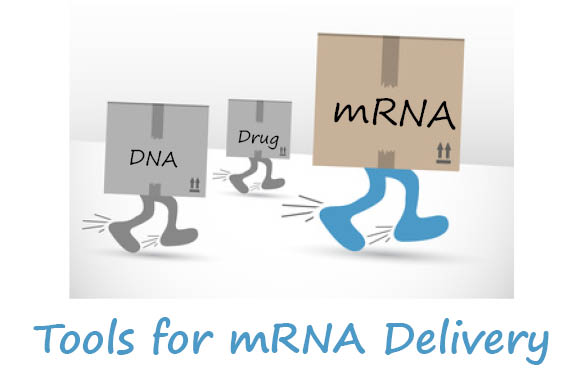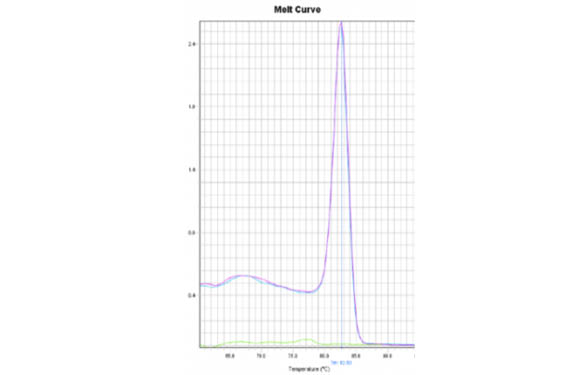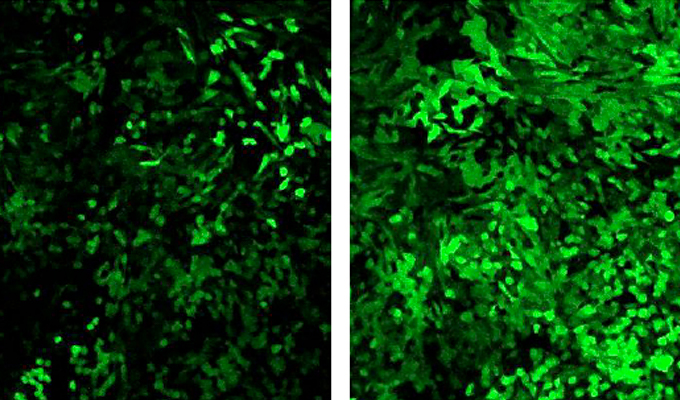Direct delivery of RNA sequences to a cell circumvents many drawbacks inherent to plasmid or viral DNA. This innocuous strategy reveals being as efficient as viruses when it comes to conveying and expressing nucleic acid sequences in non-dividing cells, for it does not rely on nuclear entry, precluding any mutagenic events by the same token.
Once efficiently engineered to escape their automatic and swift destruction in most biological environments, RNA molecules become remarkably stable and turn out to be extremely reliable for in vivo applications. In line with our Nucleic acid delivery tools presentation series, let’s focus here on RNA delivery to the cell.
Vulnerability to ubiquitous RNAses and activation of innate mechanisms of cell defenses through the TLR pathway are the main threats that must be beaten in order to extend RNA stability:
- Incorporation of 2′-O-methyl and 2’ Fluoro NTP analogs efficiently armors RNA molecules in front of nucleases
- RNA sequences elaborated with 5’methylcytidine and Pseudoridine analogs readily escape the TLR pathway surveillance
- Half-life of mRNA molecules is drastically increased when they are delivered camouflaged on lipid nanoparticles in vivo
As proof of principle, single sub-microgram intramuscular injections of such modified mRNA encoding murine EPO elicit sustained erythropoietin expression in the bloodstream of mice for up to 14 days (Kormann et al., 2011), without inducing the activation of innate defense responses observed when unmodified mRNA is injected as a control (Karikó et al., 2012). Another success-story is a novel evolution of genetic vaccine whereby mRNA molecules encoding any candidate antigen can now be used to modify dendritic cells ex vivo. Usually hard-to-transfect with DNA vectors, this cell type can now be brought to produce any given protein in vitro before they are re-introduced in vivo, presenting the selected antigen to the immune system and thereby elicit the desired immunological response (Weiner D.B., 2013).
Another success-story is a novel evolution of genetic vaccine whereby mRNA molecules encoding any candidate antigen can now be used to modify dendritic cells ex vivo. Usually hard-to-transfect with DNA vectors, this cell type can now be brought to produce any given protein in vitro before they are re-introduced in vivo, presenting the selected antigen to the immune system and thereby elicit the desired immunological response (Weiner D.B., 2013).
These groundbreaking examples now pave the way to the market for this powerful technology under exponential development since the advent of the “small RNA era”.
Chemical or enzymatic mRNAs
Modified RNA molecules can be produced chemically or by enzymatic techniques. Modified and capped mRNAs can readily be obtained in less than 30 minutes from any DNA template using RNA polymerases. However, mRNA prepared with enzymatic synthesis may present transcriptional errors, can only be produced at laboratory scale, and products are usually not pure enough for intended use. Additionally, this approach does not allow incorporation of analog nucleotides into specific positions along the sequence, which is often a key point to improve nuclease resistance while keeping the functionality.
The alternative to enzymatic techniques is chemical synthesis, which yields much larger amounts of modified RNAs, that can be further highly purified by conventional methods. Of note is the fact that introduction of any analog nucleotide at any position is no longer worrisome under this approach. However, this technology rapidly meets its limits when large molecules must be produced. Indeed, yields of chemically-synthesized RNA decrease exponentially with increasing length because coupling efficiencies at each step are 90-99% (depending on the type of incorporated analog nucleotide). In contrast, bacteriophage polymerases, such as T7 RNA polymerase, are quite processive and it is therefore possible to obtain RNA by transcription that are thousands of bases long and migrate as a single band on a denaturing gel.
Depending on their application, scale needed, purity and project, one must choose one or the other method for their RNA production. Nowadays, mRNA production can even be outsourced.
mRNA Delivery: Cationic lipids & polymers
Cationic lipids or polymers make complexes with nucleic acids producing positively charged complexes (with a positive Z potential). This positive potential has a dual effect by protecting nucleic acids from nucleases and by directing the complexes to the cell membrane, leading to cellular uptake by endocytosis.
Depending on their length, RNA molecules can be delivered to the cell by microinjection, electroporation or by using carriers such as lipid reagents or nanoparticles.
- Short-RNA transfection: siRNA, miRNAs, fluorescent probes… can be successfully delivered with cationic-polymer/lipid formulations adapted for small molecules delivery. Short RNAs do not usually need extended modifications as they do not elicit innate defense responses.
 SignaGen Laboratories have launched a series of optimized transfection reagents compatible with siRNA applications (PepMute™, PepMute™ Plus bringing also outstanding levels of DNA/siRNA co-transfection; GenMute™ optimized for siRNA transfection and for DNA/siRNA co-transfection; PowerFect™ for efficient DNA transfection and DNA/siRNA co-transfection).
SignaGen Laboratories have launched a series of optimized transfection reagents compatible with siRNA applications (PepMute™, PepMute™ Plus bringing also outstanding levels of DNA/siRNA co-transfection; GenMute™ optimized for siRNA transfection and for DNA/siRNA co-transfection; PowerFect™ for efficient DNA transfection and DNA/siRNA co-transfection). - Long-RNA transfection: in vitro delivery of mRNA results in the onset of expression within 1 h and in a peak in expression 5-7 hours after transfection. Among the afore-mentioned modifications, lipid nanoparticles (i.e. DOTAP, DOPC… based nanoliposomes) are classically used to maintain elevated mRNA levels in the bloodstream for long periods of time (sometimes up to 28 days).
What about you?
How do you produce your mRNAs? Which delivery reagents do you recommend?



